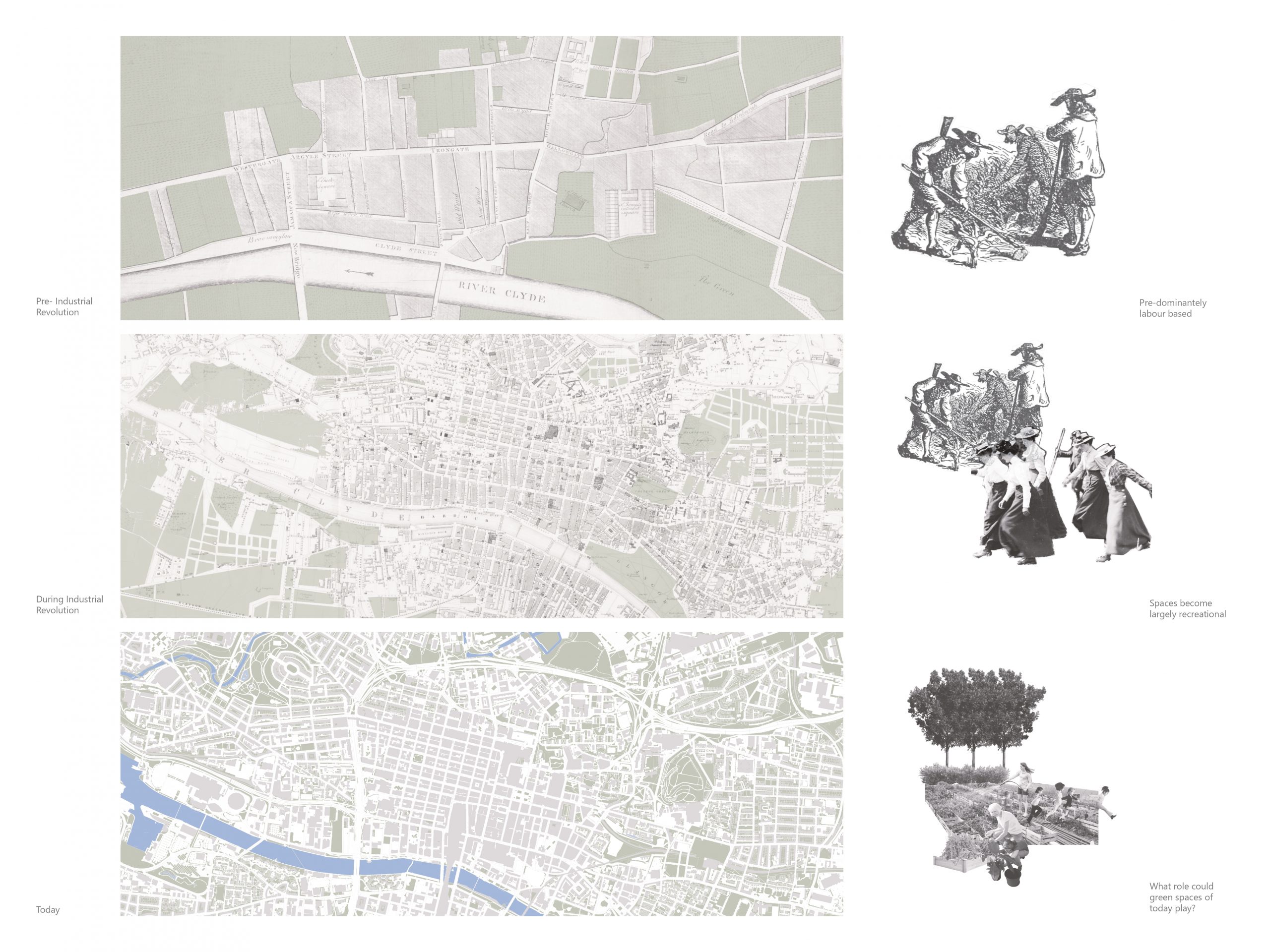The distribution of green space within the urban realm has always been interlinked with the political and social climate of the time. Prior to the industrial revolution, Glasgow was mainly farmland with many engaging subsistence farming meaning although many of the city had access to greenery; this was often done for labour purposes.
When the industrial revolution took hold in the early 19th century; much of the labour focus shifted from agriculture and towards the manufacturing industry which lead to a loss of farmland and its access. However, this also surge of wealth also brought in a new kind of green open space- recreational green space without the previous labour focus.
Over the decades, we have become more aware and focused on our well-being with laws and policies passed to protect and maintain our public health and well-being particularly after witnessing the appalling effects that poor working and living conditions could cause during the industrial era. Today, with the biggest threat to our lives and future is the climatic and ecological crisis and the understanding of how green spaces could be beneficial to our health- we are slowly working greenery back into the urban fabric with roles with the hopes of alleviating the crisis as well as raising further awareness of the benefits nature could bring.
Key Themes: Politics, Land-use, Green Space

